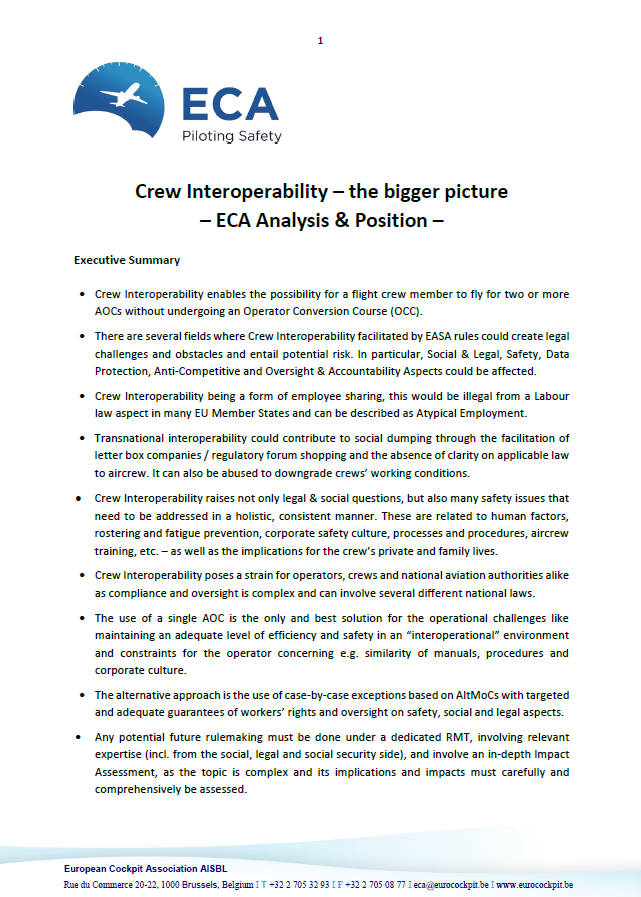

The demise of regular direct aircrew jobs shows no signs of slowing down. A new form of atypical employment in aviation – pilot sharing – is now added to the already long list of creative set-ups. Along with self-employment, temporary agency work, pay-to-fly schemes, etc. certain airlines in Europe are now keen to create pools of pilots to be used throughout their various subsidiaries and branches. Many airlines nowadays operate under Air Operator Certificates (AOCs) issued by different European Member States. Pilot sharing – officially called “Crew Interoperability” – is a concept under review by EASA, aiming to give them more flexibility at a lower price. But is there future for it?
Employee sharing, or interoperability, would be a change of the current practice that a crew member must do an Operator Conversion Course each time he/she changes the AOC they fly under. By sweeping this requirement under the carpet, pilots can be asked to work for an airline without actually being an employee there. In this scenario, pilots could then be ‘plugged’ in and out of different AOCs at the convenience of airlines. The obvious benefits for the airlines are high flexibility and cost-saving. But what about the employees? And what about the safety procedures? A very thorough ECA Position Paper details out all aspects that need to be considered should EASA decide to pursue this atypical employment model.
Companies like SAS have used a form of interoperability already. But unlike the current proposal, SAS used a single AOC and was under a joint cooperative oversight from three states’ aviation authorities that are located in the same region and with strict negotiated and aligned collective agreements in all countries concerned.
Oversight would be one of the most critical points if crew interoperability is introduced. Overseeing such complex operations would require national authorities to cooperate closely with each other. It must always be clear – to the operator, crew and the authority – under which AOC each and every flight is operated. As previous accident reports have shown ‘virtual airlines’ with multiple overlapping and unclear lines of accountability present a real safety risk and were banned due to horrific safety records and lack of accountability. Crew interoperability represents a real risk to unlearn the safety lessons drawn from the past.
But beyond the safety risks, there are multiple layers that make such a practice problematic. Differences in corporate culture, safety procedures, human factors, rostering and training all add up to the complexity of sharing pilots. A simple example is that pilots would need to operate with identical Standard Operating Procedures across the different operators. ‘Almost similar’ or ‘similar’ will just not be enough.
On top of that flight crew can end up in a legal limbo – unclear who they work for, which labour law applies to them or where their home base is. An airline can pick and choose an AOC country of the cheapest workforce, most lax labour law and lowest social security requirements. Also crew interoperability raises a problem both of legal and societal problems and in some EU countries sharing employees is illegal.

This very thorough ECA Position Paper details out all aspects that need to be considered should EASA decide to pursue this atypical employment model.